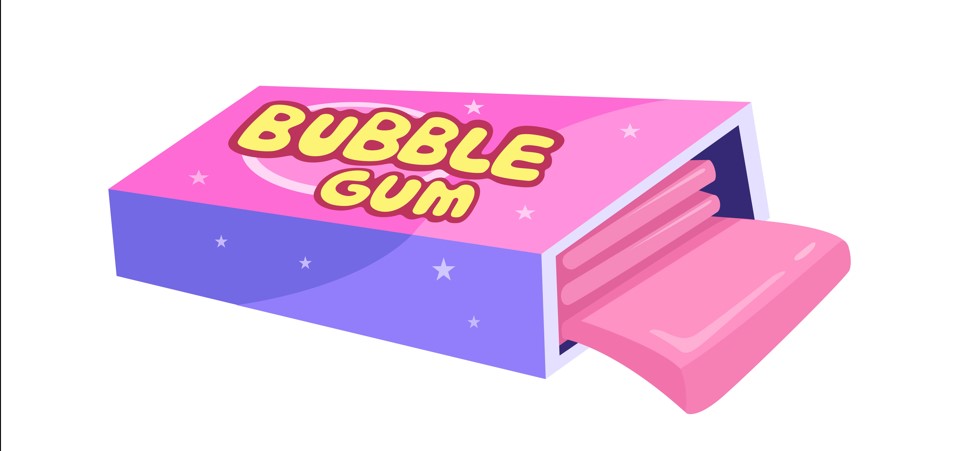Introduction
The chewing gum industry in India has grown significantly over the past decade. With urbanization, rising disposable incomes, and a young population eager for quick refreshment and fun flavors, chewing gum has become a popular product in both rural and urban markets. But while flavor and branding matter, packaging is the true hero of this industry. It not only protects the product but also attracts customers, builds brand identity, and supports sustainability goals.
For entrepreneurs and businesses aiming to become chewing gum packaging manufacturers in India, there is immense opportunity. India’s packaging industry is projected to grow at a double-digit CAGR, and with confectionery consumption increasing, chewing gum packaging has carved out a strong niche. However, stepping into this business requires strategic planning, knowledge of market trends, compliance with regulations, and access to the right technologies.
This guide will walk you through every step of becoming a successful chewing gum packaging manufacturer in India—covering market insights, licensing requirements, technology adoption, design strategies, sustainability practices, and more.
1. Understanding the Chewing Gum Market in India
Before jumping into manufacturing, you must understand the chewing gum industry’s scope and demand.
1.1 Market Size & Growth
India’s confectionery industry is valued at billions of dollars, and chewing gum holds a significant share within it. With multinational brands like Wrigley, Perfetti Van Melle, and Lotte dominating the market, packaging has become a strong differentiator.
- Urban Consumers: Seek premium, innovative, and hygienic packaging.
- Rural Consumers: Look for affordability and value-for-money packs.
- Trends: Sugar-free gum, eco-friendly packaging, and collectible designs.
1.2 Key Drivers of Demand for Gum Packaging
- Increasing youth population.
- Growing retail presence (supermarkets, kirana stores, and e-commerce).
- Rising impulse purchases at checkout counters.
- Preference for resealable, portable, and eco-friendly packaging.
Understanding these market drivers helps new entrants identify the right target audience and design strategies.
2. Legal and Regulatory Requirements in India
To set up a chewing gum packaging manufacturing unit in India, compliance is critical.
2.1 Business Registration
Register your business as a Private Limited Company, LLP, or Proprietorship depending on your scale and investment.
2.2 GST and Tax Compliance
Register for GST to enable seamless business transactions across states.
2.3 Food Safety Regulations
Since chewing gum is a consumable product, packaging must comply with FSSAI (Food Safety and Standards Authority of India) guidelines.
2.4 Environmental Regulations
As sustainability becomes mandatory, packaging manufacturers must comply with Plastic Waste Management Rules, 2016, and newer updates on Extended Producer Responsibility (EPR).
2.5 Intellectual Property Rights
Secure trademarks for your designs to avoid counterfeiting and maintain exclusivity.
Legal compliance builds trust with big brands who may become your clients.
3. Setting Up Manufacturing Infrastructure
3.1 Location & Facilities
Choose an industrial area with easy access to raw materials, transportation, and skilled labor. States like Gujarat, Maharashtra, and Tamil Nadu offer industrial incentives.
3.2 Machinery & Equipment
Invest in modern packaging technologies:
- Flow Wrap Machines for single sticks.
- Pouch Packaging Machines for pillow pouches and sachets.
- Carton Packaging Machines for bulk or retail packs.
- Printing Machines for custom designs and branding.
3.3 Workforce
Hire skilled packaging operators, designers, and quality control staff.
3.4 Investment & Capital
The cost of setting up a mid-scale unit may range from ₹50 lakhs to ₹5 crores depending on scale, automation level, and location.
4. Types of Chewing Gum Packaging in India
4.1 Stick Gum Packaging
Traditional rectangular packs wrapped individually and packed in cardboard sleeves.
4.2 Bubble Gum Wrappers
Colorful and playful designs aimed at children, often with jokes, puzzles, or collectible features.
4.3 Blister Packs
Premium option offering hygiene and freshness, popular in urban India.
4.4 Resealable Pouches & Containers
Trendy and convenient packaging formats, ideal for on-the-go consumers.
4.5 Eco-Friendly Packaging
Biodegradable wrappers, recyclable paper cartons, and compostable films gaining traction among eco-conscious consumers.
Offering diverse packaging types allows you to cater to multiple market segments.
5. Design and Branding Strategies
Packaging design can make or break chewing gum sales.
5.1 Visual Appeal
Bright, bold colors attract children, while sleek, minimalist designs appeal to adults.
5.2 Flavor Communication
Use color coding and fruit/mint graphics to clearly indicate flavors.
5.3 Interactive Elements
Include QR codes, puzzles, or contests on wrappers to engage customers.
5.4 Brand Identity
Work closely with clients (gum manufacturers) to create packaging that reflects their brand values and target audience.
6. Sustainability in Chewing Gum Packaging
Sustainability is not optional—it’s a necessity.
6.1 Eco-Friendly Materials
Use biodegradable films, recyclable paper, and compostable plastic alternatives.
6.2 EPR Compliance
Partner with recycling agencies to meet Extended Producer Responsibility obligations.
6.3 Consumer Demand for Green Packaging
Studies show over 70% of Indian consumers prefer eco-friendly products, making this a strong selling point for your business.
7. Marketing Your Packaging Manufacturing Business
7.1 Target Clients
- Chewing gum manufacturers (local and international).
- Private label confectionery brands.
- Retailers launching in-house gum products.
7.2 Online Marketing
Build a website showcasing your services, machinery, capacity, and eco-friendly solutions. Use SEO strategies to attract gum manufacturers searching for packaging partners.
7.3 B2B Partnerships
Attend trade fairs like PackEx India and India Foodex to network with confectionery brands.
7.4 Branding Your Business
Create a strong brand identity as a reliable, sustainable, and innovative packaging manufacturer.
8. Challenges in the Chewing Gum Packaging Industry
8.1 High Competition
Many established global players dominate the market. Differentiation is key.
8.2 Rising Raw Material Costs
Plastic, paper, and ink prices fluctuate. Maintaining profit margins is a challenge.
8.3 Sustainability Compliance
Switching to eco-friendly solutions can increase costs initially.
8.4 Technological Upgradation
Keeping up with automation and digital printing requires constant investment.
9. Future of Chewing Gum Packaging in India
The future looks promising with trends like:
- Smart Packaging: QR codes linking to AR games or loyalty programs.
- Minimalist Designs: Clean, eco-friendly packaging with less ink and more recyclable content.
- Personalized Packs: Customized designs for special events or limited editions.
Brands are increasingly investing in packaging as a marketing tool, ensuring long-term demand for innovative manufacturers.
Conclusion
Becoming a chewing gum packaging manufacturer in India is a profitable venture, but success depends on innovation, compliance, sustainability, and strong branding. By focusing on advanced technology, eco-friendly solutions, and strategic partnerships, you can build a thriving business in this growing sector.
5 FAQs About Becoming a Chewing Gum Packaging Manufacturer in India
Q1. What licenses are required to start a chewing gum packaging business in India?
You need business registration, GST, FSSAI compliance (for food packaging), and environmental clearances.
Q2. How much investment is needed to set up a packaging unit?
A small to mid-scale unit may require ₹50 lakhs to ₹5 crores depending on automation, machinery, and location.
Q3. What types of packaging are most popular for chewing gum in India?
Stick packs, blister packs, resealable pouches, and eco-friendly wrappers are in high demand.
Q4. How can packaging manufacturers attract big clients?
By offering sustainable solutions, innovative designs, and maintaining strict quality standards, manufacturers can win contracts with large brands.
Q5. What is the future of gum packaging in India?
The future lies in sustainable, smart, and customizable packaging solutions that enhance customer engagement and brand loyalty.


Leave a Reply